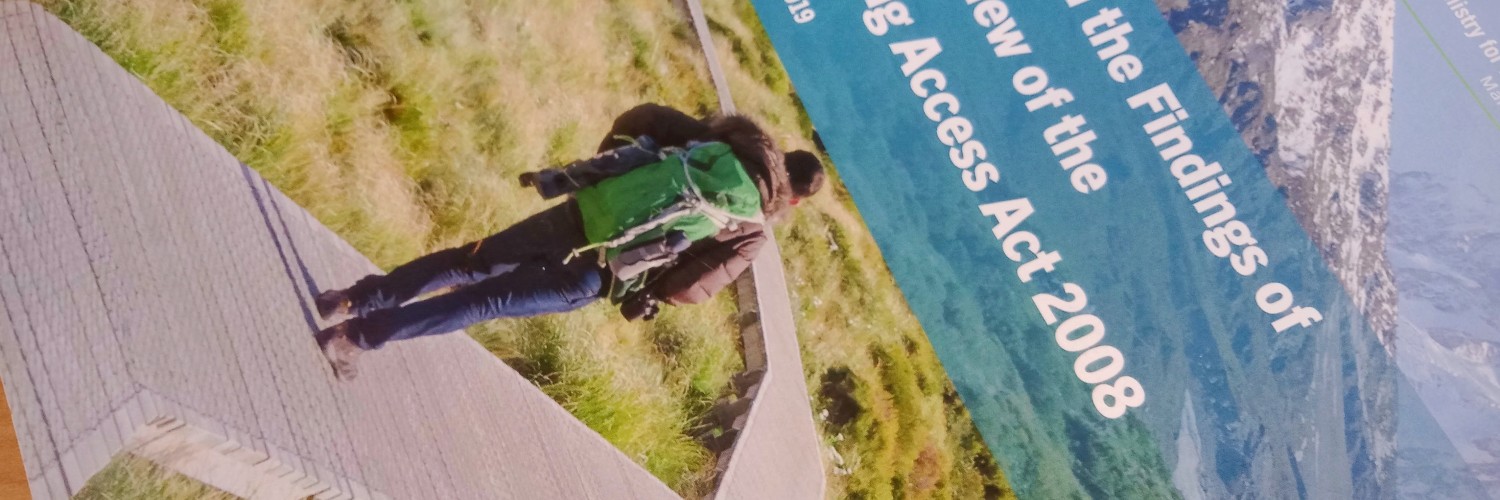Background
The Walking Access Act 2008
The Act is about providing free, certain, enduring and practical access to the outdoors for walking and for types of access associated with walking, such as access with firearms, dogs, motorcycles or motor vehicles.
The Act also establishes the Commission1, with responsibility for leading and supporting the negotiation, establishment, maintenance and improvement of access over public and private land.
Key sections of the Act, including its purpose, the objective and functions of the Commission, and the priorities for negotiating walking access over private land, are included at Appendix C.
The Act and the Commission are one part of a wider system which supports the development of public access to the outdoors. The Department of Conservation (DOC), LINZ, Heritage New Zealand Pouhere Taonga, the New Zealand Transport Agency (NZTA), and territorial authorities are other significant contributors to the public outdoor access system. Non-government organisations also play a vital role in promoting, establishing and maintaining access to the outdoors. This includes communities, Māori, businesses, landowners, recreation and environmental groups, and individuals.
The New Zealand Walking Access Commission
Objective and functions
The Commission began operating in 2009, with the objective to:
‘lead and support the negotiation, establishment, maintenance, and improvement of walking access and types of access that may be associated with walking access, such as access with firearms, dogs, bicycles, or motor vehicles.’2
To meet its objective, the Commission has a wide range of statutory functions including: providing national, regional and local leadership on co- ordinating access with relevant stakeholders; publishing maps and information about public access over land; facilitating resolution of disputes about access; and negotiating with landholders to obtain access.3 When considering the priorities for negotiating access over private land, the work of the Commission must take into account the desirability of walking access to certain areas such as the coast, rivers, lakes, conservation areas,4 areas of scenic or recreational value, and areas for sports fishing.
Under Part 3 of the Act, the Commission can establish walkways over public and private land, which are surveyed (in accordance with the relevant rules under the Cadastral Survey Act 2002), and published in the Gazette. For access over private land, a gazetted walkway may take the form of an easement or lease over the land, or may occur through the purchase of land by the Commission.5 However, the work of the Commission to secure access opportunities is not limited to using the gazetted walkway mechanism.
Instead, the work ranges widely from legally enduring easements and formed tracks, to informal access agreements across private land with the permission of the landowner. Resolving disputes over existing access and supporting territorial authorities and community groups to establish tracks and trails, are other ways the Commission secures access opportunities.
In addition to the Act, the Commission works across other legislation when negotiating with private landowners and working with public landholders to establish access. This includes the Overseas Investment Act 2005, Resource Management Act 1991, Conservation Act 1987, Land Transfer Act 1952, Local Government Act 2002, Te Ture Whenua Māori Act 1993 and Treaty of Waitangi Settlement legislation.
Funding and governance
The Commission is funded by an annual appropriation of $1.789 million from the Crown, as part of Vote Primary Industries. As part of this appropriation, the Commission administers the Enhanced Access Fund (EAF), which aims to provide a resource for community organisations to develop their own projects to provide enhanced access to outdoor recreational spaces. The EAF is a contestable fund, with the total amount of funding available set annually as part of the Commission’s standard budget planning processes. Over the past two years, a sum of $100,000 has been made available.
The Commission comprises a board, senior management and operations teams, RFAs, corporate services, and a communications and partnerships team. The Commission is mainly based in Wellington, with 12 part-time RFAs based from Northland to Otago. The RFAs play an important part of the Commission’s engagement with and reputation among local stakeholders, including territorial authorities. Total staff resourcing equates to 10.1 full-time equivalents (FTEs) - with 7.6 FTE permanent staff and 2.5 FTE fixed-term staff in Wellington. The RFAs, all contractors, comprise an additional 3.7 FTE total.
A recent Statement of Performance Expectations (2019/2020) sets out the Commission’s overarching vision: that New Zealanders have free, certain, and enduring practical access to the outdoors. To achieve this, it aims to ensure that all stakeholders are involved in generating public access opportunities to support healthy and prosperous communities. The Commission is working towards this by delivering three key outcomes:
- managed access is available where and when it will add most value to communities;
- people know how to find access; and
- people access the outdoors responsibly.
The Commission sees its main role as being about leadership. It works alongside other organisations and individuals to ensure access to the outdoors is valued, enduring and understood. It relies heavily on achieving its outcomes through engagement, influencing others and facilitation.
In 2017/18 the Commission published and began to embed its new strategy for 2017-2022. The most significant change affecting its work was an increased focus on proactive planning, undertaken in partnership with a range of key stakeholders. In contrast, previous strategies and statements of performance expectations had a stronger focus on maintaining and creating access opportunities, providing information and advice, and responsiveness to access enquiries.

